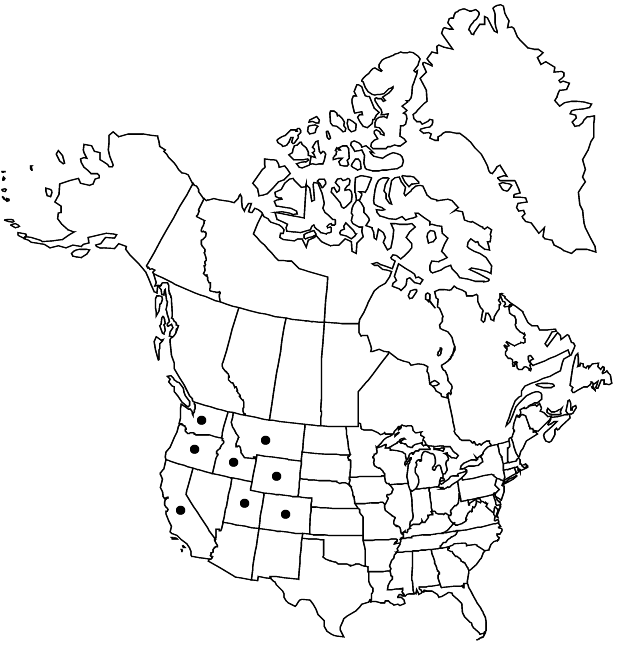Difference between revisions of "Androsace filiformis"
Observ. Bot. 2: 10. 1781 ,.
FNA>Volume Importer |
imported>Volume Importer |
||
| (6 intermediate revisions by 2 users not shown) | |||
| Line 11: | Line 11: | ||
|name=Androsace capillaris | |name=Androsace capillaris | ||
|authority=Greene | |authority=Greene | ||
| + | |rank=species | ||
}} | }} | ||
|hierarchy=Primulaceae;Androsace;Androsace filiformis | |hierarchy=Primulaceae;Androsace;Androsace filiformis | ||
| Line 26: | Line 27: | ||
|elevation=100-3000 m | |elevation=100-3000 m | ||
|distribution=Calif.;Colo.;Idaho;Mont.;Oreg.;Utah;Wash.;Wyo.;Europe;e Asia (Russian Far East). | |distribution=Calif.;Colo.;Idaho;Mont.;Oreg.;Utah;Wash.;Wyo.;Europe;e Asia (Russian Far East). | ||
| − | |discussion=<p>Androsace filiformis grows in wetlands and is easily identified by the tiny flowers and delicate, filiform inflorescence that give the plants a graceful appearance. No other North American Androsace occurs in wetlands. Androsace filiformis occurs widely across Europe and Asia (including the Russian Far East) and in the western continental United States, with a notable gap in Alaska and Canada.</p> | + | |discussion=<p><i>Androsace filiformis</i> grows in wetlands and is easily identified by the tiny flowers and delicate, filiform inflorescence that give the plants a graceful appearance. No other North American <i>Androsace</i> occurs in wetlands. <i>Androsace filiformis</i> occurs widely across Europe and Asia (including the Russian Far East) and in the western continental United States, with a notable gap in Alaska and Canada.</p> |
|tables= | |tables= | ||
|references= | |references= | ||
| Line 35: | Line 36: | ||
-->{{#Taxon: | -->{{#Taxon: | ||
name=Androsace filiformis | name=Androsace filiformis | ||
| − | |||
|authority=Retzius | |authority=Retzius | ||
|rank=species | |rank=species | ||
| Line 50: | Line 50: | ||
|publication year= | |publication year= | ||
|special status= | |special status= | ||
| − | |source xml=https:// | + | |source xml=https://bitbucket.org/aafc-mbb/fna-data-curation/src/2e0870ddd59836b60bcf96646a41e87ea5a5943a/coarse_grained_fna_xml/V8/V8_535.xml |
|genus=Androsace | |genus=Androsace | ||
|species=Androsace filiformis | |species=Androsace filiformis | ||
Latest revision as of 22:44, 5 November 2020
Plants annual, slender, not mat-forming. Leaves in single rosette; petiole present; blade ovate to deltate, 5–25 × 2–6 mm, base abruptly narrowing to winged petiole, margins without hairs, surfaces glabrous or slightly glandular, glands not stipitate. Scapes (often multiple), 5–25, 3–12 cm, glabrescent. Inflorescences 5–20-flowered; involucral bracts lanceolate, relatively narrow. Pedicels erect to arcuate, filiform, unequal, 1–6 cm. Flowers: calyx campanulate to hemispheric, without prominent ridges, ca. 2 mm, lobes erect, triangular, apex acute; corolla tube shorter than calyx, limb ca. 2 mm diam. Capsules slightly shorter than calyx, 2–4 mm. 2n = 20 (Asia).
Phenology: Flowering early-mid summer.
Habitat: Wet meadows
Elevation: 100-3000 m
Distribution

Calif., Colo., Idaho, Mont., Oreg., Utah, Wash., Wyo., Europe, e Asia (Russian Far East).
Discussion
Androsace filiformis grows in wetlands and is easily identified by the tiny flowers and delicate, filiform inflorescence that give the plants a graceful appearance. No other North American Androsace occurs in wetlands. Androsace filiformis occurs widely across Europe and Asia (including the Russian Far East) and in the western continental United States, with a notable gap in Alaska and Canada.
Selected References
None.